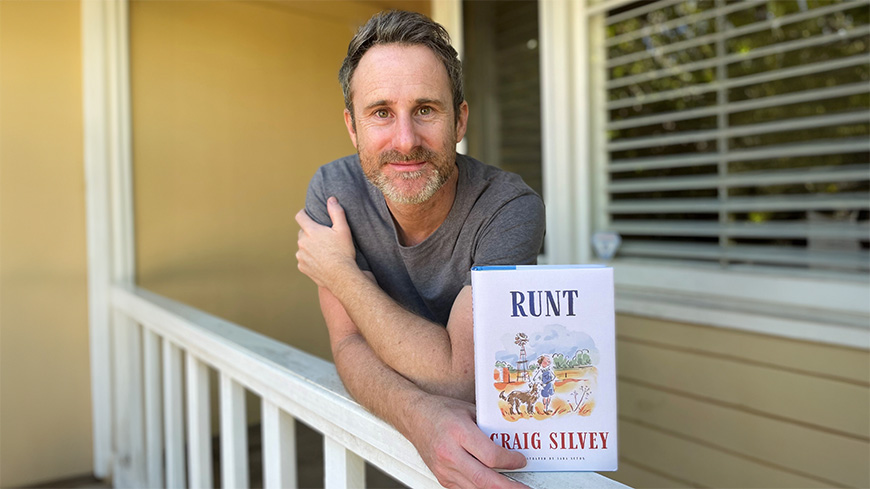
Lesson 6: Page to screen

Task 1: Novel and screenplay
The RUNT novel was published before the film was released, but the story was always intended for the screen.
Author and screenwriter Craig Silvey shares the process:
"RUNT began as a film project; I conceived of this as a cinematic vehicle to tell the story. So, I wrote a manuscript, and I wrote a draft of the screenplay. I wrote the two, essentially, at the same time: they were hand in hand. I guess it's helped to accelerate the film itself. Typically, you don't go into production a year after a book has come out.”
Director John Sheedy acknowledges the intricate task of transforming a beloved novel into a film, pointing out that not every aspect of a rich novel can make it to the screen. To stay as true to the book as possible, he concentrated on maintaining its core - the essence, wit and pivotal scenes that fans hold dear. Sheedy credits Craig Silvey's regular presence on set during shooting as an invaluable touchstone for maintaining the book’s authenticity.
As a class, discuss the following questions:
- How might writing the screenplay and the novel at the same time change the way the story is told? Do you think it helps the characters and themes stay more connected between the book and film?
- What differences can you notice (or imagine) between how a story is shown in a film and how it’s described in a book? Which one helps you understand the characters more deeply, and why?
- Why do you think the creators chose to tell RUNT in both a novel and a film at the same time? How might that help more people connect with the story and its message?
Task 2: Class scene comparison
Choose one key scene that appears in both the Runt film and the novel. For example, when Annie first meets Runt. Watch the scene from the film together as a class, and then read the same moment from the book.
Use the table below to compare how the same moment is told in each format:
| Film | Novel |
|---|---|
| What do you see? (actions, setting, expressions) | What do you imagine? (descriptions, thoughts, feelings) |
| How do you understand what Annie is thinking or feeling? | What extra details do you get from reading her thoughts? |
| What emotions or themes are shown? | Are they shared in the same way as in the film? |
Write a short paragraph answering this question: Which version - film or book - helped you understand the characters better, and why?
Task 3: Small group scene comparison
Break the class up into five groups and assign each group one of the story points from the underdog story mapping exercise in Lesson 2. Find the coinciding scenes in the book and reflect on the similarities and differences, completing the same table in Task 2.